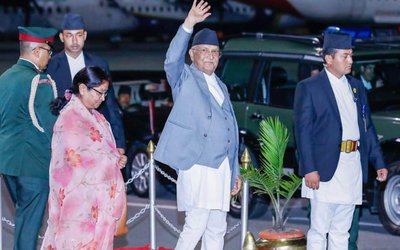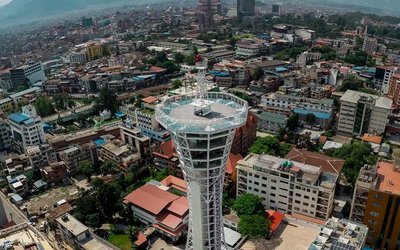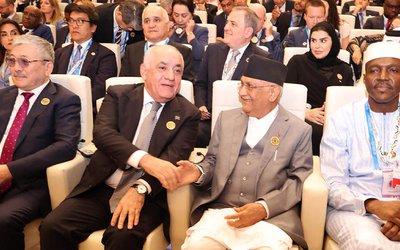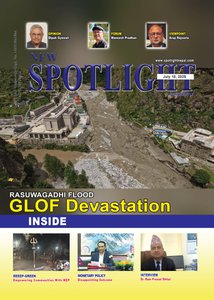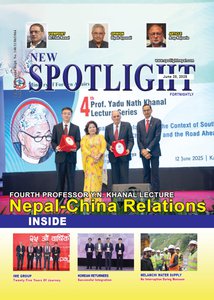The night Tehran burned, the scent of scorched metal and cordite hung heavy over the Shahran fuel depot. Israeli missiles—American-made Hellfires delivered just days prior—tore through pipelines while U.S. satellites painted targets in real-time. As orange flames licked the sky, Russian strategist Sergei Glazyev’s chilling prophecy echoed through the Kremlin’s halls: "Having stumbled on the third stage [subjugating Russia], they have now begun the fourth"—the destruction of Iran. What Washington envisioned as a surgical strike may prove the catalyst for its own obsolescence.
The Architect’s Trap: Brzezinski’s Unraveling Design
Zbigniew Brzezinski, Cold War architect of the Carter Doctrine, never formally outlined the "five stages" Glazyev attributes to him. Yet the blueprint bleeds from his life’s work. In The Grand Chessboard (1997), he argued Eurasia’s domination was essential to U.S. primacy: control Ukraine to fracture Russia’s sphere; cleave Europe from Moscow; neuter Russia; crush Iran; isolate China. A tidy plan—if the pieces complied.
Stage 1 collapsed when Ukraine became Russia’s Stalingrad. Sanctions backfired spectacularly, catalysing a Eurasian Economic Union turbocharged by Chinese capital and Iranian oil. By 2025, Russia’s ruble had surged 30% against the dollar despite Western pressure—a stark symbol of de-dollarisation’s momentum. Stage 2 fractured as German factories shivered without Russian gas, while Macron murmured of "strategic autonomy." At Stage 3, Russia weaponised commodities, pivoted eastward, and built a sanctions-proof financial infrastructure. Then came Stage 4: Iran.
The American Mask: Diplomacy as Trojan Horse
As Trump’s envoys sat with Iranian diplomats in Muscat discussing nuclear compromises, U.S. intelligence fed Israeli jets coordinates for the Natanz enrichment facility. "We had a clear U.S. green light," an Israeli official revealed. "The talks were perfect cover". Trump later boasted: "I always knew the date... because I know everything".
This wasn’t covert ops—it was geopolitical theatre. Three hundred U.S. Hellfire missiles shipped days before the strike; bunker-busting bombs guided by NSA satellites; a calculated "campaign to lull Iran" before the hammer fell. When Tehran retaliated, U.S. warships intercepted drones over the Mediterranean. The mask slipped: America had outsourced its war but owned every consequence.
Behind the scenes, Trump’s administration was already evacuating personnel from Middle Eastern embassies and military bases—a tacit admission they knew the firestorm coming. As one senior diplomat confessed: "We are watching and worried. We think it’s more serious than any other time in the past".
Why Stage 4 Ignites the Very Fire It Sought to Extinguish
Brzezinski himself understood containment. In 2012, he warned CNN: "If we can deter the Soviet Union... why on earth can’t we deter Iran?". But the post-9/11 doctrine of smashing states to preclude resistance ignored history’s lesson: violence forges unintended alliances.
Iran was never a domino—it was a keystone. Its destruction aimed to:
- Sever China’s Belt & Road lifeline through Central Asia
- Cripple Russia’s sanctions-evasion network for oil sales
- Decapitate the "Axis of Resistance" from Hezbollah to the Houthis
Instead, the strikes achieved the opposite:
- Russia accelerated military integration with Tehran, sharing air defences and SWIFT alternatives while Putin condemned Israel’s "unpredictable consequences" in a 50-minute call with Trump.
- China fast-tracked Iran’s SCO membership, embedding it in a security pact spanning Eurasia. Foreign Minister Wang Yi bluntly told Israel its actions "seriously violate... the basic norms governing international relations" while assuring Iran of Beijing’s support for its "legitimate rights" .
- BRICS announced a commodity-backed digital currency, directly challenging petrodollar hegemony as Gulf states quietly nodded approval.
Oil markets screamed the truth: Brent crude spiked 7% as tankers diverted from the Strait of Hormuz.” Any closure could worsen inflationary pressures," warned StoneX strategist Kathryn Rooney Vera. For nations drowning in dollar-denominated debt, the message crystallised: the West’s wars are your crisis.
The Cracks in the Pillars: America’s Triple Fracture
Glazyev’s "suicidal strategy" diagnosis now reveals its prescience. America’s power relied on three pillars now crumbling:
Military primacydissolved when Iranian drones—built with sanctioned parts—humiliated U.S. air defences. Hypersonics from Moscow and Beijing made American aircraft carriers obsolete floating targets. As former CIA officer Glenn Carle noted, Israel’s strikes "will not end Iran’s nuclear program... facilities can be rebuilt".
Financial supremacy unraveled as the ruble’s surge proved de-dollarisation’s momentum. Russia’s fertiliser giants like Phosagro broke production records while redirecting exports to Brazil and India—nations increasingly trading in local currencies.
Alliance control evaporated when Trump bypassed Israel on his Gulf tour, securing $2 trillion in deals with Saudi Arabia, Qatar, and the UAE instead. The symbolism screamed: oil-rich monarchies now saw Israel as a liability, not an asset. Turkish President Erdogan captured the mood, telling Saudi Crown Prince Mohammed bin Salman that Israel "needs to be stopped" as "the main threat to stability".
Birth Pangs of a New Order: The Multipolar Midwives
No moment captures the shift like Tehran’s streets today. As citizens shelter in metro stations unused since the Iran-Iraq War, state TV replays Donald Trump snarling, "They are all DEAD now, and it will only get worse!". This isn’t liberation—it’s nihilism. And from Brasília to Jakarta, it fuels a consensus: The West offers only chaos.
The emerging architecture is visibly consolidating:
- Economic Rebalancing: Qatar’s $1.2 trillion investment package with the U.S. included a provocative "gift" of a custom Air Force One—a transactional emblem of the new mercantile globalism. Yet behind the pageantry, Gulf states quietly expanded energy ties with China and Russia, hedging their bets.
- Security Realignments: As The Washington Institute noted, Israel now seeks "new regional partnerships" as U.S. engagement wanes—a stark admission that even America’s closest ally senses the tectonic shift.
- Diplomatic Revolutions: Saudi Arabia—once Iran’s sworn enemy—now condemns Israeli strikes, with Crown Prince Mohammed bin Salman telling Iran’s president the Kingdom opposes attacks undermining Tehran’s "sovereignty and security".
When Putin and Trump spoke on June 14, their dialogue epitomised the new reality: 50 minutes discussing Middle East fires, with Ukraine relegated to an afterthought. Trump’s plea—"this war in Israel-Iran should end, to which I explained, his war should also end"—sounded less like statesmanship and more like a weary realtor trading properties.
The Aftermath: A World Unchained
Brzezinski’s ghost haunts Washington corridors. His greatest fear—a "Eurasian balancer" uniting Russia, China, and Iran—now mobilises in plain sight. As Russian fertiliser flows to Brazil, Chinese yuan clear in Riyadh, and Iranian drones defend Caracas, the scaffolding of a post-Western system rises. This isn’t anti-Americanism; it’s post-American pragmatism.
The Israeli-Iranian war won’t end with treaties. It will end when:
- Malaysia pays Iran for oil in gold
- India sources drones from Russia
- France negotiates directly with Houthis to free cargo ships
Multipolarity isn’t utopia—it’s fragmented pragmatism. And after 80 years of U.S. stewardship, the Global South whispers: Could disorder be safer than your order?
As Carnegie Endowment’s Chris Chivvis warned, Trump’s failure to control Netanyahu or Zelensky signals a perilous truth: "Unless the administration can find discipline... the United States risks getting dragged into more conflicts that will not serve the interests of the American people".
On the night of the first strikes, an Iranian diplomat told Al Jazeera: "The U.S. is a partner in these attacks". He was only half-right. America isn’t just a partner—it’s the chief architect of its own eclipse. In Glazyev’s words, by forcing "all countries independent of them" to build "new global currency instruments" and "their own systems of economic security," Washington "dramatically accelerated the transition to a new world economic order".
The center of gravity hasn’t just shifted—it has shattered, and from its fragments, a new world is being forged in the fires of America’s last gambit.
*Zakir Kibria is a Bangladeshi writer, policy analyst and entrepreneur based in Kathmandu. He can be reached at zk@krishikaaj.com
- The Digital Strip Search: How America’s Social Media Visa Edicts Redraw Colonial Borders in Cyberspace
- Jul 14, 2025
- The Iron Silk Road: How a Train to Tehran is Rewriting The World’s Map – And Why The Old Powers Are Terrified
- Jun 25, 2025
- The Kuala Lumpur Pivot: How A Silent Summit In Malaysia Is Rewriting The Global Economic Map
- Jun 16, 2025
- The Rise of Mediation Diplomacy – How Hong Kong’s IOMed Charts a New Path for a Multipolar World
- May 28, 2025
- Rivers as Narratives of Peace in South Asia
- May 18, 2025

